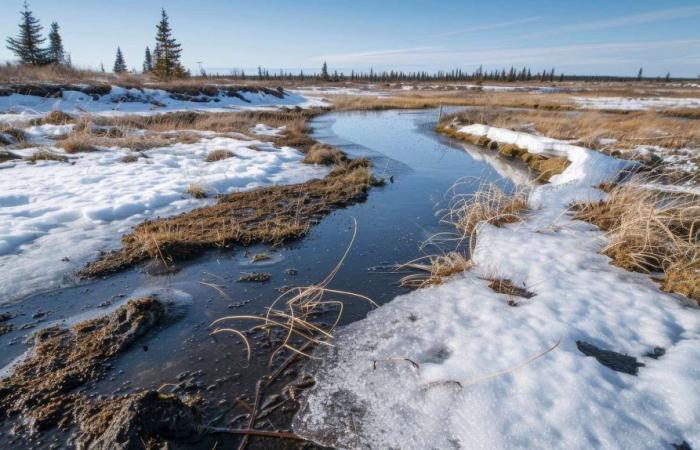This is what we call a vicious circle, from which it will be difficult to escape. We know to what extent the melting of permafrost represents a threat to the climate. By making available enormous quantities of mattermatter organic until now trapped in the ice, these are enormous volumesvolumes of greenhouse gases that are about to enter the atmosphere. But that’s not all. Because the Arctic zones are the scene of other chain reactionschain reactions equally worrying.
Thus, the sourcesource permafrost subjects numerous minerals to alteration processes, particularly sulfidessulfides. In contact with the oxygen present in the atmosphere, these will then produce acidsacids. However, these acids will themselves participate in the alteration of other mineralsminerals present nearby. A process that ends with the release of CO2.
Okay, that’s worrying, but is this process meaningful? Yes, say researchers from the University of Oxford in a new study, published in the journal Science Advances.
Global warming: rocks are also starting to release tons of CO2
A team of scientists has indeed succeeded for the first time in quantifying CO2 emitted at the end of this chain of reactions. And the values are not very reassuring. The study focused on the Mackenzie River basin in Canada. It reveals that the sulfate concentrations (SO42-))which are a product of the alteration of sulphide minerals, are very sensitive to increasing temperature. Thus, between 1960 and 2020, a rise in temperature in this region of 2.3°C led to an increase in sulphide alteration by 45%! Scientists have estimated that by 2100, the Mackenzie River basin could produce 3 billion kgkg/ to the CO2 ! This represents half of the broadcastsbroadcasts annualannual of Canadian domestic aviation, the researchers explain in a press release.
The impact of global warming on the entire Arctic zone could therefore have considerable consequences. Without forgetting that these natural CO emissions2 only reinforce the greenhouse effect and therefore the rise in temperatures. And so on.
Peat bogs to help reduce these emissions?
This study further shows the importance of taking into account theoxidationoxidation sulphide minerals in climate change models. Understanding these geological processes is also essential to be able to find solutions to stop them, or at least slow them down. It is on this point that researchers are now focusing. Field studies also reveal that the presence of bogsbogs would help reduce the sulphide oxidation process. Protect and support the development of these wetlandswetlands could therefore be interesting for reducing CO emissions2 in these Arctic areas.






